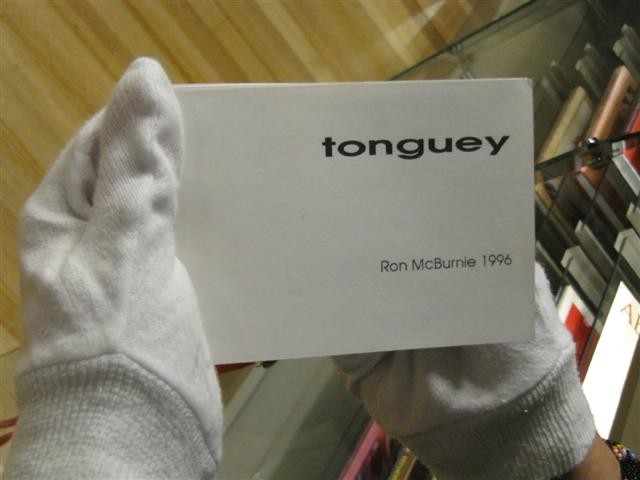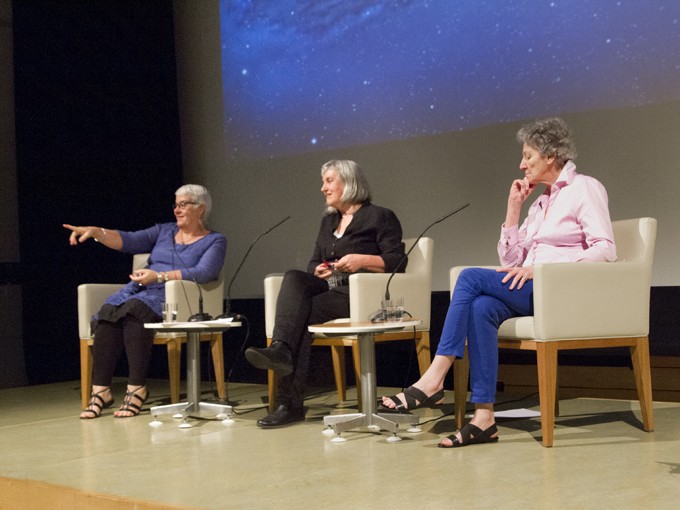
During the past two decades in Australia there has been a surge in the production of artists’ books. The legacy of this creative output provided the foundation for the artists’ book seminar, The trouble with artists’ books hosted by the Australian Library of Art with the support of the Siganto Foundation on Saturday 4th May. The seminar was introduced by the State Librarian Janette Wright who noted that during the past twenty years the State Library has actively collected artists’ books. The collection thus provides the perfect vehicle through which to view the development of artists’ books in Australia.

The three speakers for the seminar, gallerist Noreen Grahame of grahame galleries + editions, artist and Adjunct Associate Professor at Southern Cross University Jan Davis and Australian Library of Art librarian, Helen Cole all have a long association and involvement with artists’ books. An audience of 150 attended the seminar, many practising artists, some from as far afield as Melbourne attesting the continuing interest in artists’ books in Australia.
Helen led the seminar providing a librarian’s perspective alluding to problems artists’ books pose to libraries – beginning with the perennial problem of the definition of an artists’ book for which there is no definitive answer. Variability in the form of artists’ books was discussed using examples from the collection. The troubles of exhibition, troubles concerning how books are made and the likelihood or not of standing the test of time with regular use, the challenge of cataloguing the books and finally the limitation of dedicated audiences. Helen concluded that variability is the greatest challenge when working with artists’ books, but equally the greatest strength.


As a gallerist, Noreen presented a different set of ’troubles’. She noted that while the scene today is ‘in-your-face’ it was a very different issue 30 years ago being a semi-underground movement. When she opened her gallery in 1987 she had no idea who was making books, which institutions were collecting them and if indeed a culture of private collecting existed. Noreen said the issues she had to contend with initially were locating references in the literature, exhibiting and then mounting artists’ books fairs as a democratic means of distributing the prolific output of artists. Awards have now entered the scene and the literature of artists’ books is considered to be ‘keeping pace’. All this raises artists’ expectations of success, but the reality is that most artists’ books do not find a home.


Finally Jan tackled the trouble with artists’ books from the perspective of an artist. For her the proliferation is directly related to printmakers adapting their work to the medium and then promoting it to students in Australian art schools. Artists’ books provided an alternative space to painting for the dissemination of ideas. This, together with new technologies which made book production quicker and easier than ever before, has ensured that artists’ book production in Australia has flourished. Today the World Wide Web provides a means for the rapid spread of news regarding the creation of artists’ books, linking book artists around the globe.


The seminar was followed by the launch of a large format artists’ book Hearsay, a collaborative work by Archibald prize winning painter Euan MacLeod, Townsville printmaker Ron McBurnie and Man Booker short listed writer Lloyd Jones. Susi Muddiman, Director of Tweed River Art Gallery engaged in a conversation with the creators of Hearsay providing an insight into the development, design, creation and finally display of the artists’ book.

Judging by the attendance, the enthusiasm and positive feedback from participants, The trouble with artists’ books seminar was a long overdue forum for artists and lovers of artists’ books to gather and ponder issues which surround the art form in Australia. The outstanding success has been noted and planning for the 2015 event which will again be sponsored by the Siganto Foundation is underway.
A podcast of the seminar The trouble with artists’ books is available on the State Library website.
Comments
Your email address will not be published.
We welcome relevant, respectful comments.